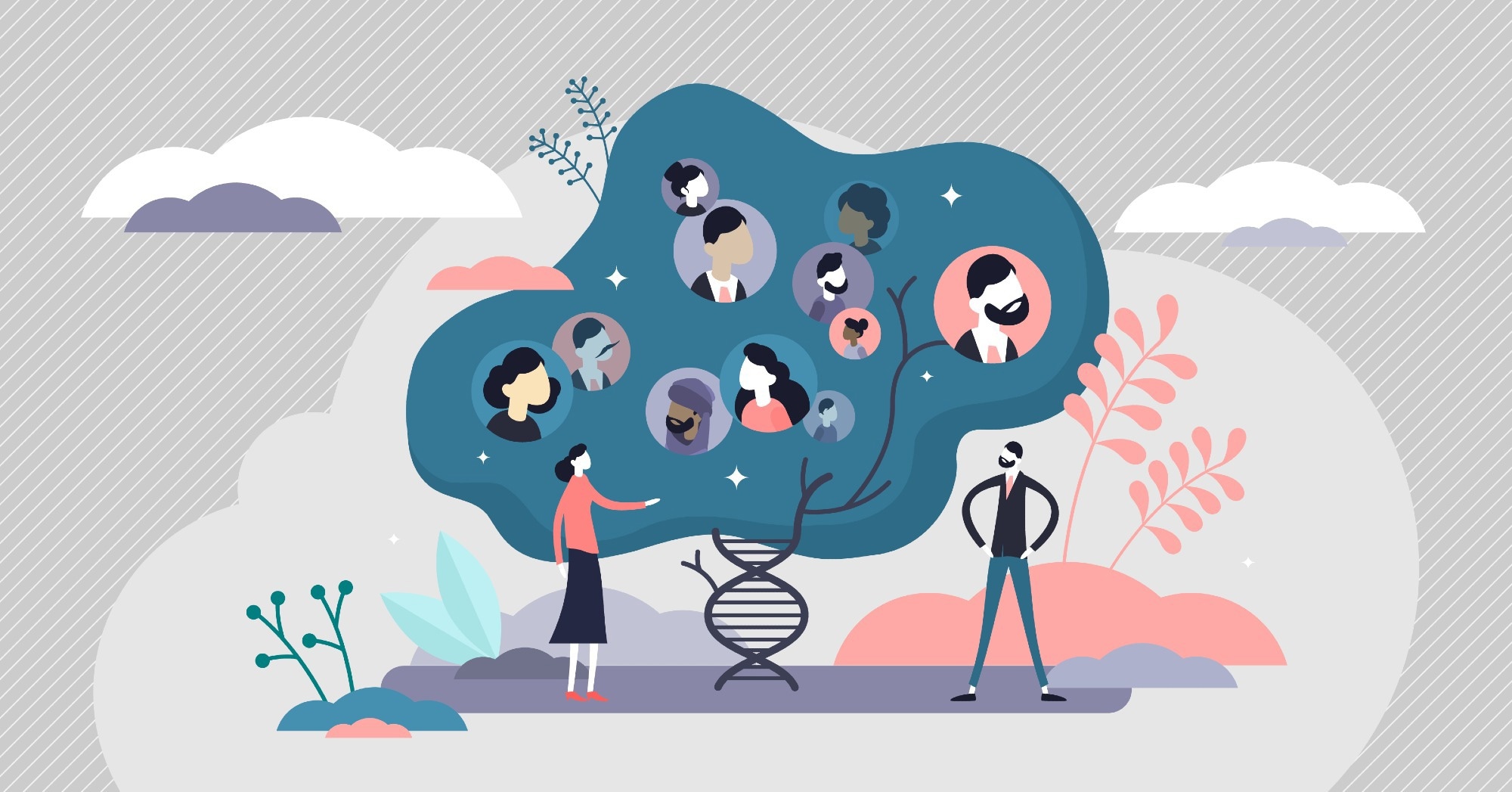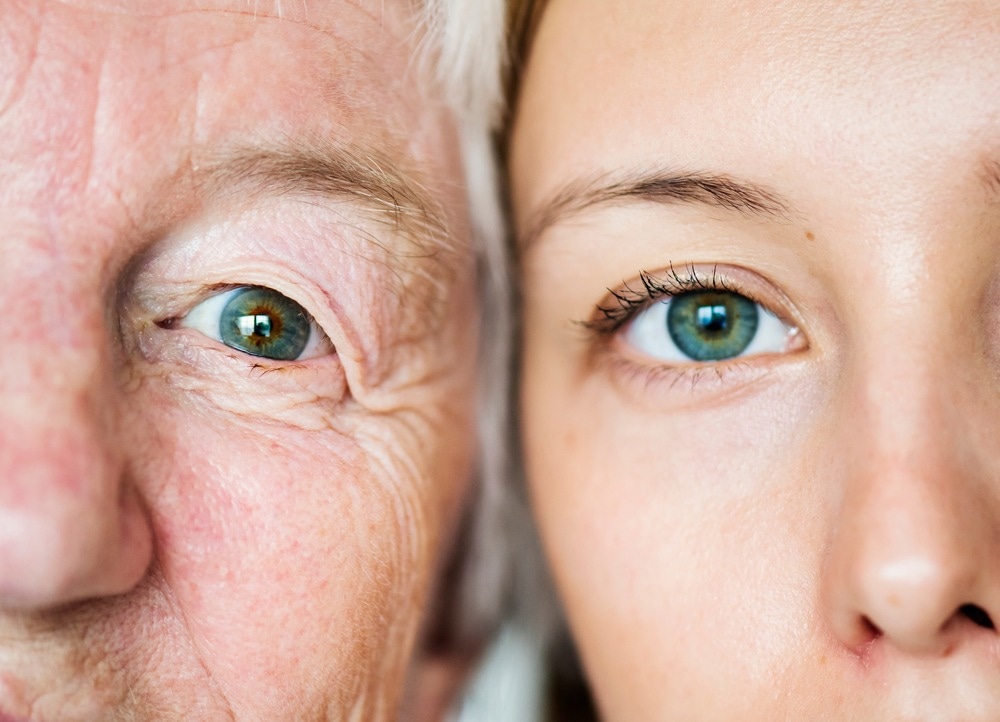Genetics play a significant role in human health. Different gene pools associated with various ethnic groups can carry a range of allele frequencies; these allele frequencies that may vary within different ethnic groups can affect health and even diseases.

Image Credit: VectorMine/Shutterstock.com
Genetic conditions can be found more commonly within ethnic groups that can be traced to certain geographic areas through investigations within ancestry; these populations share genes due to these genes being inheritable and passed down to offspring into the next generation. If an ancestor with a disease-causing variant or mutation passed a particular gene to future generations, the mutation would also be frequently seen in that group, along with the associated genetic disorder.
An example of this is sickle cell anemia, which can be observed more commonly in certain ethnic populations of African or Mediterranean descent.
While allele frequencies of mutations can be found in any ethnic group, the passing of shared genes can demonstrate their frequency in particular ethnic groups, as mentioned.
Ethnic Phenotype
Mutations, however, are not the only genes that are shared within ethnic groups, as ethnicity can affect all parts of the genetic make-up.
Ethnic phenotype can be quite complicated, with the involvement of many genes; these can include obvious traits shared in a homogenous population, such as skin, hair, and eye color. However, not every person within that population shares all the same alleles.
There are more than 20 different genes that are involved in hair color, and it is the unique combination of these that can result in an individual displaying a certain color. This can be explained using a Punnett square.
Using Punnett Squares to Predict Genotype
Punnett squares can be used to predict an individual's genotype by crossing two different people to find the associated phenotype. Alleles, a form of a gene, can be either dominant or recessive.
Each person's genetic make-up is divided between having an allele from the mother and an allele from the father. Dominant alleles, such as brown hair, are usually associated with a capital letter, i.e., 'B', within Punnett squares and usually only require the presence of one allele for the offspring to present with brown hair. However, blond hair is a recessive trait, and so to display blond hair, two alleles are required, one from the mother and one from the father.
| |
Mother |
| Father |
|
Blond (b) |
Blond (b) |
| Brown (B) |
Bb |
Bb |
| Blonde (b) |
Bb |
bb |
This Punnett square demonstrates the crossing of a mother with blond hair that carries two recessive alleles (bb), and a father with brown hair, with heterozygous alleles, one dominant brown hair allele (B), and one recessive blond hair allele (b).
This enables the prediction of hair color for their offspring to consist of a 75% probability of having a child with brown hair, with heterozygous genes (Bb) and a 25% probability of having blond hair (bb) due to the homozygous recessive alleles being present.
Ethnicity can affect hair color, as some ethnicities carry genes such as dark hair, which is passed down to offspring, and so are associated with having dark hair as a whole population; this can be seen in those of black and Asian descent, where dark hair alleles are found most frequently.

Image Credit: Rawpixel.com/Shutterstock.com
Environmental Influence
However, while genotypes within ethnic groups may influence phenotype, i.e., what can be physically seen on an individual, such as hair or eye color, environmental factors also play a large role in broad health differences. This can include prenatal effects, nutrition, peer group pressure, toxin exposure, and exposure to infectious agents.
The same genotype exposed to different environments may be able to present with various phenotypes due to the effect of the environment on the expression and function of those genes. This may imply that individuals who do not experience the same environmental factors as previous ancestors may not present with exactly the same phenotype; this may be seen in both physical traits and disease-causing variants.
An example of this can include changes in the environment, such as better prenatal care, medication, and overall better quality of health than in low-income countries, which may alleviate the risk of illnesses or aid with managing disorders.
Future Outlook
The interaction of ethnicity and genotype, as well as the interaction with environmental factors, is debated among scientists and can be quite complex; further research in this field may be required to understand how all these factors can affect the overall genetic make-up of an individual.
Sources:
- Baye, T., Abebe, T. and Wilke, R., 2011. Genotype–environment interactions and their translational implications. Personalized Medicine, 8(1), pp.59-70. Available at: 10.2217/pme.10.75
- Genetics, H. and Conditions, I., 2022. Why are some genetic conditions more common in particular ethnic groups?: MedlinePlus Genetics. [online] Medlineplus.gov. Available at: <https://medlineplus.gov/genetics/understanding/inheritance/ethnicgroup/#:~:text=People%20in%20an%20ethnic%20group%20often%20share%20certain,may%20be%20more%20frequently%20seen%20in%20the%20group.> [Accessed 28 May 2022].
- Jorde, L. and Wooding, S., 2004. Genetic variation, classification and 'race'. Nature Genetics, 36(S11), pp.S28-S33. Available at: https://doi.org/10.1038/ng1435
- National Research Council (US) Panel on Race, Ethnicity, and Health in Later Life; Bulatao RA, Anderson NB, editors. Understanding Racial and Ethnic Differences in Health in Late Life: A Research Agenda. Washington (DC): National Academies Press (US); 2004. 3, Genetic Influences. Available from: https://www.ncbi.nlm.nih.gov/books/NBK24694/
- Pavan, W. and Sturm, R., 2019. The Genetics of Human Skin and Hair Pigmentation. Annual Review of Genomics and Human Genetics, 20(1), pp.41-72. Available at: https://doi.org/10.1146/annurev-genom-083118-015230
- Pearce, N., Foliaki, S., Sporle, A. and Cunningham, C., 2004. Genetics, race, ethnicity, and health. BMJ, 328(7447), pp.1070-1072. Available at: 10.1136/bmj.328.7447.1070
Further Reading